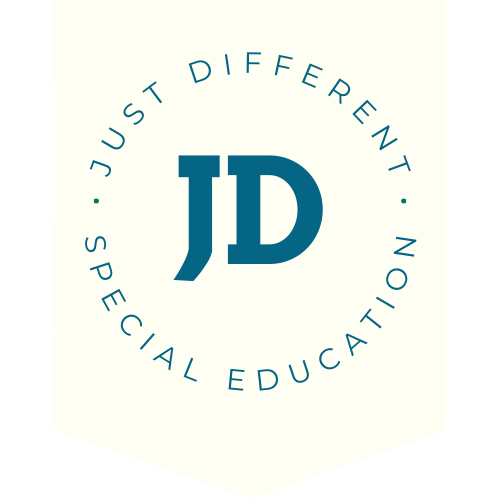Making Nonverbal Addition Simpler for Students with Special Needs
Addition, a fundamental building block of mathematics, can sometimes seem straightforward to us teachers, yet it is actually quite complex and requires several prerequisite skills for our students with special needs—-especially our nonverbal students. Understanding why addition can be complicated can help you simplify it so you can really see your students grow. By breaking down the process of addition into manageable steps and using clear, concrete methods, we can help these students grasp this essential skill.
Why Addition Can Be Complicated
The process of addition is more than just putting numbers together. It involves several prerequisite skills:
- Number sequence: Saying the number sequence in order.
- Cardinality: Knowing that the last number counted is the total.
- Set Formation: Visualizing and creating sets of objects.
- Memory and Attention: Holding information in memory and maintaining focus on the task.
- Number Recognition: Identifying the name and symbol for numbers.
- Understanding Value: Knowing that a number stands for an amount of items.
Did you ever think about how much is involved in addition?? To read more about resources for numeracy skills click here. Even if your special ed students don’t have all of these prerequisites, addition is a great way to practice and build up these skills. But let’s break it down.
Simplifying Addition: Step-by-Step Approach
To make addition more accessible, particularly for nonverbal students, we can break down the process into three clear steps: counting out the two sets to be added, combining these sets, and counting the total. Here’s how to approach each step effectively:
- Count Out the Two Sets to Be Added: Use physical objects like counters, beads, or blocks. Encourage students to count out the objects for each set. For example, if adding 3 and 2, have them count out three blocks and then two blocks separately. Interactive Tools: Digital tools or apps that allow students to manipulate virtual objects can also be beneficial. These tools often provide immediate feedback, which can reinforce learning. (Click here for one)
- Combine the Two Sets Together: Once the sets are counted out, guide students to physically combine the two sets. This step helps them see that addition is about bringing things together. Visual Aids: Use visual aids like a number line, number path or ten frames where students can place the objects to see the combined set. (Click here for one)
- Count to Find the Total: Encourage students to count the total number of objects in the combined set. Have the student find a number card or use AAC to say the total.
Connecting the Process to Math Sentences
Once students understand the physical process of addition, the next step is to connect this understanding to mathematical symbols and sentences.
- Visual Representation: Show how the physical sets and their combinations translate into a written math sentence. For example, if they counted 3 blocks and 2 blocks, show them the equation 3 + 2 = 5. You can also do this in reverse by showing them the number sentence first then using physical objects to demonstrate it.
- Verbal Explanation: Verbally explain what you are doing. For instance, say, “I have three blocks and I add two more blocks, which gives me five blocks altogether.”
- Consistency and Repetition: Consistently use the same language and symbols to reinforce the connection. Practice with various examples until students are comfortable. Video modeling is an excellent way to give consistent instruction.
Resources for Educators
Printable PDF
Here is a simple printable addition mat that makes consistency easier. You can use this with any manipulatives you have. Print and laminate one to keep with your student’s IEP goal materials

Interactive Boom Cards
Here is a similar resource, but make it interactive! This one is on Boom Learning – a website that I love using with my students!

By breaking down addition into these clear, manageable steps and connecting them to math sentences, we can make this fundamental skill more accessible to students with special needs. With patience and creativity educators can help every student build a strong foundation in mathematics.

